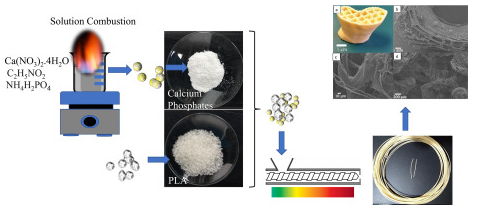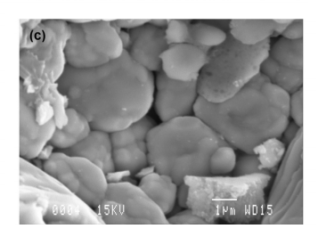
Preparation and in vitro evaluation of PLA/biphasic calcium phosphate filaments used for fused deposition modelling of scaffolds
Abstract: Ceramic materials such as calcium phosphates (CaPs) with a composition similar to the mineral phase of bones and polymeric polylactic acid (PLA) are potential candidates for the manufacturing of scaffolds to act as bone substitutes and for tissue engineering applications, due to their bioresorbability and biocompatibility. Variables such as porosity, topography, morphology, and mechanical properties play an essential role in the scaffolds response. In this paper, a polymer/ceramic composite filament of 1.7 mm in diameter based on PLA and biphasic calcium phosphates (BCPs) was obtained by hot-melt extrusion in a single screw extruder. The particles of BCP were obtained by solution-combustion synthesis, and the PLA used was commercial grade. The BCPs ceramics were characterized by X-ray diffraction (XRD), scanning electron microscopic (SEM), transmission electron microscopy (TEM), and Brunauer, Emmett, and Teller (BET). It was possible to confirm that the main inorganic phases were hydroxyapatite (HAP) and tricalcium phosphate (TCP) with grain sizes below 100 nm and with high porosity. The Filaments obtained are a bit fragile but were able to be used in fused deposition modelling (FDM) using low-cost commercial printers. The filaments were characterized by SEM and energy dispersive X-ray (EDX). The in-vitro tests of filaments showed deposition of apatite phases on their surface, non-cytotoxic behavior, adequate cell proliferation and cell adhesion.
Author(s): Nevado, P; Lopera, A; Bezzon, V; Fulla, M R; Palacio, J; Zaghete, M A; Biasotto, G; Montoya, A; Rivera, J; Robledo, S M; Estupiñan, H; Paucar, C; Garcia, C
Materials Science and Engineering: C
Published: September 2020
Volume: 114




